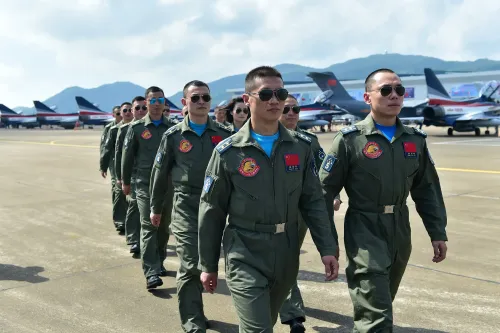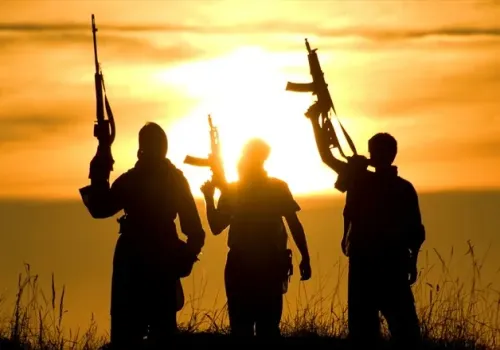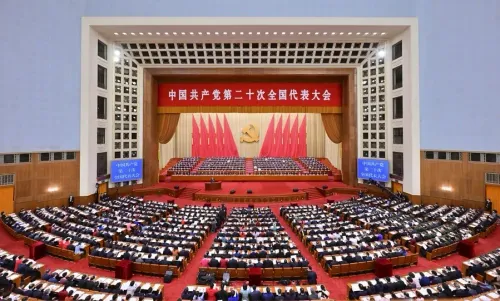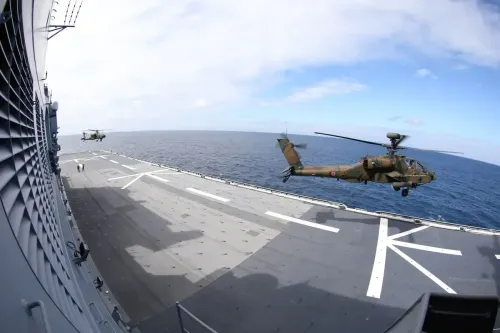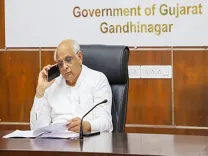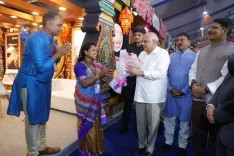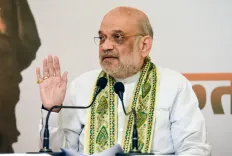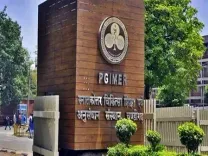Why Did Two Maoist Leaders Surrender to Telangana DGP?
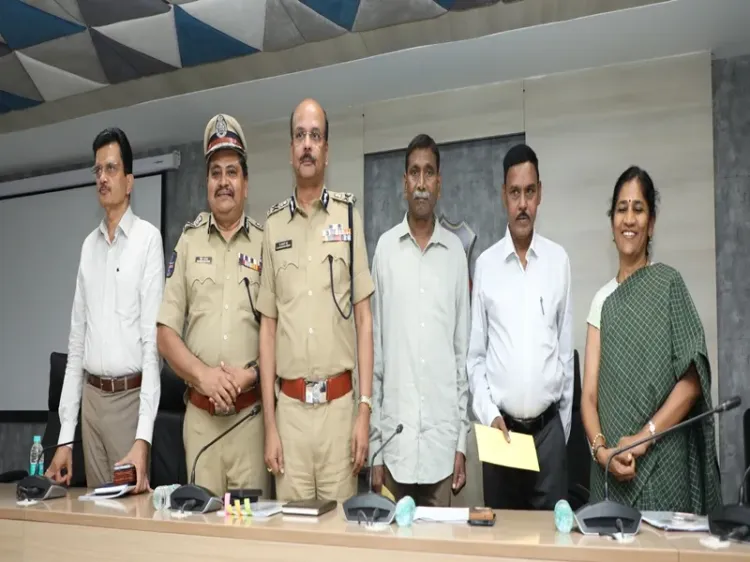
Synopsis
Key Takeaways
- Two senior Maoist leaders surrendered to Telangana Police.
- Chandranna and Prabhath have been underground for decades.
- Their surrender reflects internal conflicts within the CPI (Maoist).
- They will receive rehabilitation benefits from the government.
- A total of 427 Maoists surrendered in 2025 alone.
Hyderabad, Oct 28 (NationPress) In a significant setback for the CPI (Maoist), two high-ranking leaders surrendered to the Telangana Police on Tuesday. Pulluri Prasad Rao alias Chandranna, a Central Committee Member, and Bandi Prakash alias Prabhath, a State Committee Member, presented themselves to Director General of Police B. Shivadhar Reddy in the city.
Chandranna had been evading authorities for 45 years, while Bandi Prakash had been on the run for 42 years.
The DGP noted that this surrender followed an appeal from Chief Minister A. Revanth Reddy, urging CPI (Maoist) members to abandon their organization, reintegrate into society, and engage in the developmental initiatives benefiting the State and its populace.
Factors such as declining health, relentless pressure from law enforcement, ideological differences, and leadership conflicts within the CPI (Maoist) were highlighted as reasons behind their decision to surrender.
Both leaders were wanted with cash rewards of Rs 25 lakh for Chandranna and Rs 20 lakh for Prabhath. The DGP issued demand drafts equivalent to these amounts to facilitate their rehabilitation, alongside other benefits as per Telangana’s rehabilitation policy for surrendered insurgents.
The DGP described their surrender as a moral victory for the comprehensive strategy implemented by the Telangana Police against the CPI (Maoist).
He emphasized that their choice underscores the increasing ideological rifts and internal disputes within the various factions and leadership of the CPI (Maoist).
In 2025 alone, a total of 427 insurgents, including two Central Committee Members, eight State Committee Members, and numerous Area Committee Members, surrendered to Telangana authorities.
The police chief revealed that out of the 64 underground members of the CPI (Maoist) from Telangana, only three SCMs, two DVCS/DVCM, and four ACS/ACM are currently active within the State committee, while the others are operating in different states, including Chhattisgarh.
Among the nine CCMs of the CPI (Maoist), five hail from Telangana.
Chandranna, aged 64, from Vadkapur village in Peddapally district, has played a pivotal role in guiding the Telangana State Committee of the CPI (Maoist).
His background includes joining the Radical Students Union (RSU) during his intermediate studies. After completing his education in 1980, he acted as a courier for Mallojula Koteshwar Rao alias Kishanji, who was then the Karimnagar District Committee Secretary of the CPI (ML) KS Group. Eventually, he became a member of the CPI (ML) People’s War in the Asifabad dalam of Adilabad district.
Having served as a Central Committee Member for more than 17 years, he married Kursangi Mothibai, a Divisional Committee Member of the CPI (Maoist), in 1989. Radhakka, another member, was arrested in June 2013 but released in 2015.
Prabhath, 55, from Mandamarri village in Mancherial district, is a school dropout who joined the Radical Youth League (RYL) of the CPI (ML) People’s War in 1983.
In 1984, he became part of the Sirpur armed Dalam under Chandranna but returned home after about six months. Arrested for the murder of a CPI leader in 1985, he escaped from Adilabad sub-jail in 1988, only to go underground again. However, he eventually left the armed Dalam due to leadership disagreements and took up work as a mason in Hyderabad. In 1992, he was arrested and sentenced to life imprisonment for the murder case but was released in 2004 on humanitarian grounds, after which he rejoined the party.

